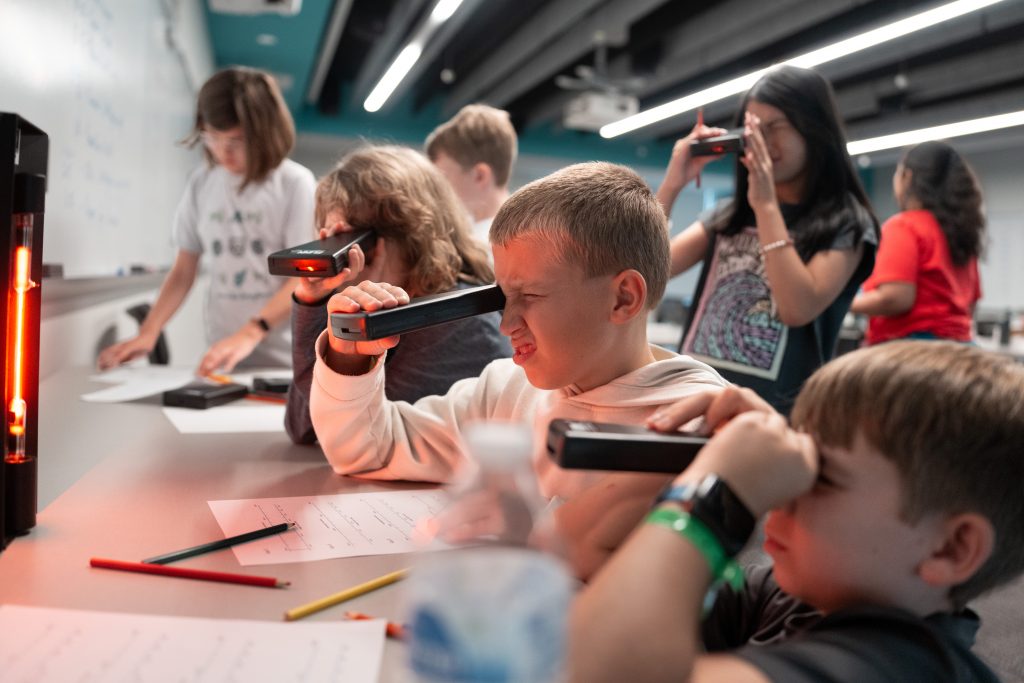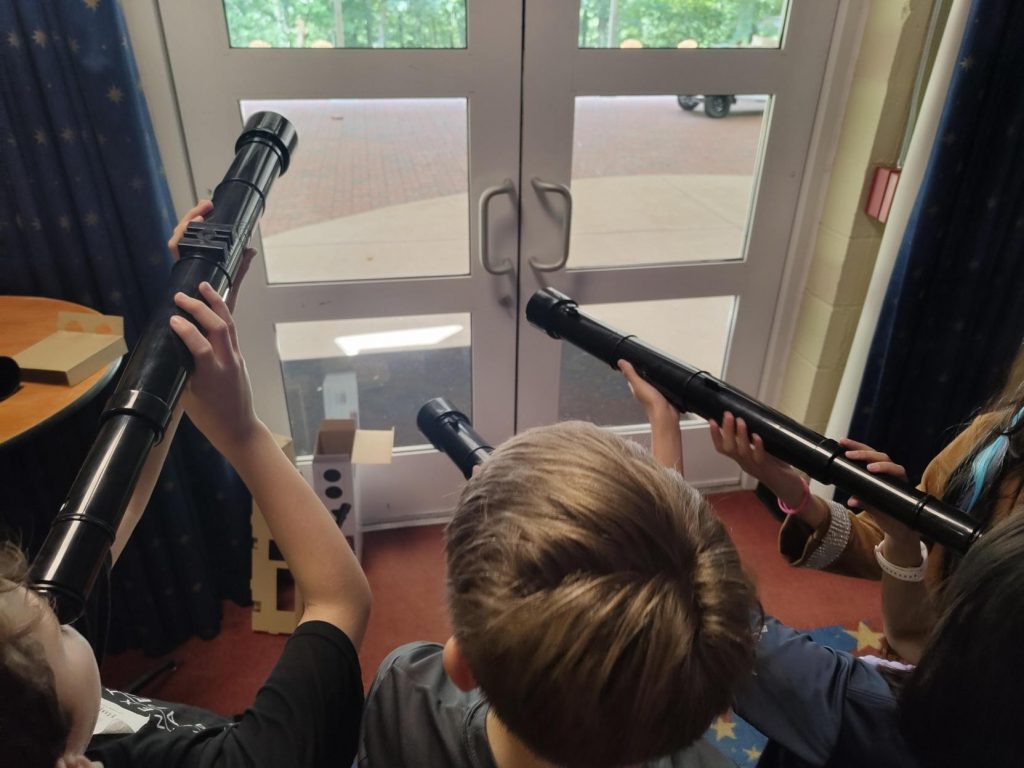
This past July, Dyer Observatory and Vanderbilt’s Programs for Talented Youth (PTY) Summer Academy at Vanderbilt for the Young (SAVY) piloted an astronomy and space science camp designed for academically advanced rising 5th and 6th graders. Over the course of the week, 16 students engaged with Dyer Observatory director and astronomer Dr. Billy Teets in a week of demonstrations, observations, and hands-on projects covering a variety of topics ranging from observing the Sun to discovering the expansion of the universe using real astronomical data.
The week’s time was split with Monday and the afternoons of Tuesday-Friday being spent on Vanderbilt’s Peabody campus. During our time on campus, students undertook a variety of topics such as how information about astronomical objects is encoded in the light they emit, absorb, or reflect. Using spectrum discharge tubes, the students not only got to see this concept in person, they got to step into the shoes of the astronomer and use handheld spectrometers to try to hand-record the spectra they observed and later use their recordings to identify the elements present in the light sources, a task that sounds easier than it is! The course also touched on the concept that there are types of light we cannot see, such as infrared, ultraviolet, and radio. What better way to convey this point than to make some of this invisible light visible, so an infrared camera was brought in to show the class how they themselves emit infrared light and can be seen even in a dark room. One of the biggest hits of the demonstration was the students seeing their infrared footprints after walking around without shoes.

While at Dyer, the course made use of the observatory’s telescopes and other equipment to do some quick observations. After introducing the students to Dyer’s 24″ Seyfert Telescope, campers constructed a refracting telescope known as a Galileoscope so they could get a better idea of the inner workings of a telescope that uses lenses. They were also able to use Dyer’s Seyfert Telescope to observe bright stars Sirius and Betelgeuse in broad daylight as well as get a glimpse of our sister planet, Venus, and its gibbous phase. Clear skies also permitted up-close views of the Sun to see sunspots and large plumes of gas known as prominences. Students also daily observations of sunspots using images from the Solar Dynamics Observatory to track the position of sunspots during the week. On Friday, they worked in groups and then as a class to combine their data and determine the rotation rate of the Sun based on sunspot movement.

One of the other observation-based projects involved using an Arduino Uno microcontroller to make a photometer, a device that can measure the amount of incoming light. Prebuilt photometers were not utilized – students instead constructed crude photometers using the microcontroller, resistors, and a light-sensitive photoresistor. After running wires between each of the components on the prototyping board, they then programmed the Arduino Uno to read the photoresistor’s output and display it as a time-lapse graph known as a light curve. The room was then darkened and a star was simulated on the library’s projector screen. Over time, a simulated planet (whose size, position, and movement could be controlled) would pass in front of the star, blocking out some of the light. Students not only detected the passage of the planet as a dip in their light curve, they could determine the approximate size of the planet relative to the star based on the depth of the dip. We then related this back to research on exoplanets (planets orbiting other stars) and how what they were doing was exactly the same concept astronomers use today to discover unseen planets orbiting other stars. We ended the experiment by simulating our own solar system’s planets passing in front of the Sun. Jupiter, the largest planet at 1/10th the Sun’s diameter, was easy to detect. Neptune, about 1/25th the diameter of the Sun, was much harder to pick out and created only a very slight dip in the data. Earth (1% the Sun’s diameter) didn’t even register in the noise, which brought home the point that smaller planets are much more difficult to detect. Another goal of this activity was to help spur interest in microcontrollers and electronics. The day before, the students were introduced to various types of electronic components, and we spent time constructing and programming simple projects. Hopefully, the students started getting ideas of projects of their own that they could build with these inexpensive supplies.
The new collaboration between PTY and Dyer Observatory was a tremendous success. In continuation of this partnership, Dyer Observatory is working with PTY to hold additional courses this fall and spring, each of which will be held on the Peabody campus for three consecutive Saturdays and cover a variety of topics in astronomy. For more information, be sure to check out PTY’s SAVY course webpage.